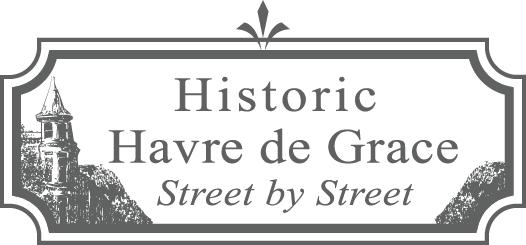Back to All Listings
323 St. John Street, The Willou Theatre,
323 St. John Street, The Willou Theatre,
c. 1909
The land on which The Willou Theatre was built was owned by Jesse and Mary Catherine Hilles of Baltimore who sold it to James Hopper (1832-1902) in 1898. Jesse Hilles (1828-1914) was a wholesale lime dealer and shipper in the mid-1800s and later a coal merchant at this address (Jesse Hilles and Company) but by 1885 was President of the Maryland Title Insurance and Trust Company of Baltimore. James Hopper built the Hopper House at 605 Ontario Street, was a successful coal and wood merchant, and nephew of John Hopper who built the Hopper Hotel at 804 Conesteo Street in 1856. The year before he died, James Hopper sold this land to John William “Will” Bauer (1862-1930), who is thought to have built The Willou Theatre in 1909 just north of the First National Bank.
Will Bauer previously ran the Bauer Manufacturing Company and, with his brother, Lawrence E. Bauer, had received patents for can openers. Will Bauer also operated a harness-making shop in the basement of the Willou Theatre for a time. It is said that the Theatre was so named because it was jointly owned by Will Bauer and Captain Louis A. Vosbury (1865-1935), hence “Willou.” Lou Vosbury was the person for whom his parents built the Vosbury House at 123 South Union Avenue as a wedding gift.
When it opened, the Willou was the first such theater in town and was well received. Initial shows were slide shows, later followed by silent movies and early shows were accompanied by a live pianist who matched the mood of the silent movie with music.
In 1910, The Bijou Dream Motion Picture Parlor (currently known as the State Theater at 325 St. John Street) was opened next door to the Willou (on the north) by Marshall E. Lindsay, who later moved to Westminster. The Bijou had seating for 135, more than the Willou. In 1915, Will Bauer bought the Bijou, built a passageway between the two theaters and upgraded some features. (The 1921 Sanborn Insurance Map shows the extended theater.) Initially during that period both theaters ran the same film—the reels were carried back and forth between the two theaters. Later, different films were shown in each theater and they changed each day.
In 1925 the Willou was devastated by fire and closed, which no doubt motivated Will and Bessie Bauer to sell this property to James “Hayward” Harlow in 1927. He was the President and Manager of the Havre de Grace Electric Company, begun in 1922. Harlow, however, sold this quickly to Conrad F. Johnson (born in 1893) and Nettie, his wife, who followed with another quick sale to Joseph and Elizabeth Parker.
At some point one of these building owners repaired and renovated the burned Willou Theatre with a red brick façade, a store or offices on the first floor, and an apartment on the second. Deeds don’t indicate when or which owner did this but most likely it was done soon after the fire, being prime property. From about 1942 to 1968 this property was owned by Walter E. Carroll (1900-1970) and Mary Ella Carroll.
In 1968, this building took on a new life when William P. Dietz and his wife, Norma, bought it and opened Dietz Finance Corporation. William was a WWII veteran and served on both the City Council and Harford County Council at times. They ran the finance business until 1981 when they sold the building to Clement W. Carson (1923-2000) and Jennie Carson. During the years 1987 to 1990, these premises were John Spangler Ltd. Jewelry, who then moved his jewelry business into the Bank of Memories next door. In 1991 the store became Graybar’s Gems Unique.
The years 1998 to 2000 brought “One Day at a Time Gifts and Variety” run by Bree Stern’s parents. In 2001 it became The Bank Gun and Pawn, owned by Diane and Bobbi Barrow, with a rental apartment on the second floor. This building is owned by Bank of Memories, LLC.
County Records
Built 1880. Commercial retail store. 2,000 sq ft, 1150 sq ft lot.
Built 1880. Commercial retail store. 2,000 sq ft, 1150 sq ft lot.
